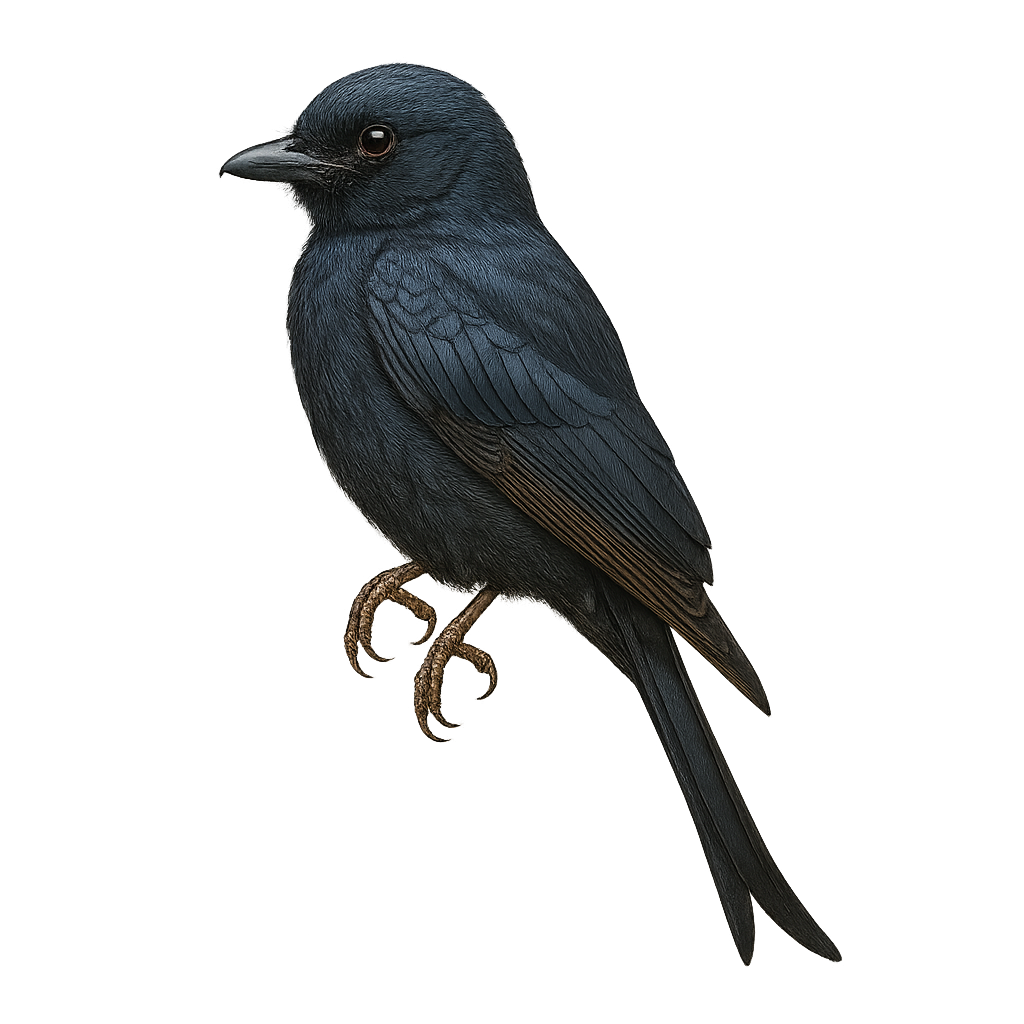Your wildlife photography guide.
Explore the black drongo in detail, study its behavior, prepare your shots.
Where to observe and photograph the black drongo in the wild
Learn where and when to spot the black drongo in the wild, how to identify the species based on distinctive features, and what natural environments it inhabits. The WildlifePhotographer app offers tailored photography tips that reflect the black drongo’s behavior, helping you capture better wildlife images. Explore the full species profile for key information including description, habitat, active periods, and approach techniques.
Black Drongo
Scientific name: Dicrurus macrocercus

IUCN Status: Least Concern
Family: DICRURIDAE
Group: Birds
Sensitivity to human approach: Suspicious
Minimum approach distance: 10 m
Courtship display: April to May
Incubation: 14-16 jours
Hatchings: April to June
Habitat:
Open fields, light forests, agricultural areas
Activity period :
Primarily active during the day, with peak activity in the morning and late afternoon.
Identification and description:
The Black Drongo, Dicrurus macrocercus, is an elegant and agile bird, easily recognizable by its glossy black plumage and long forked tail. This passerine is widely distributed in South and Southeast Asia, where it inhabits various environments such as open fields, light forests, and agricultural areas. Known for its aggressive behavior, it does not hesitate to chase away larger predators to protect its territory. The Black Drongo is also an excellent mimic of sounds, allowing it to deceive other species. Its diet mainly consists of insects, which it catches in flight thanks to its remarkable aerial abilities.
Recommended lens:
400 mm – adjust based on distance, desired framing (portrait or habitat), and approach conditions.
Photography tips:
To photograph the Black Drongo, it is advisable to use a 400mm lens or longer to capture detailed images without disturbing the bird. Look for it in open fields or agricultural areas, where it is often perched on wires or branches. Be patient and discreet, as although it is suspicious, it can get used to your presence if you remain still. Take advantage of the morning or afternoon light to get shots with good lighting and nice contrast on its glossy black plumage.
The WildlifePhotographer App is coming soon!
Be the first to explore the best nature spots, track rutting seasons, log your observations, and observe more wildlife.
Already 1 439 wildlife lovers subscribed worldwide

